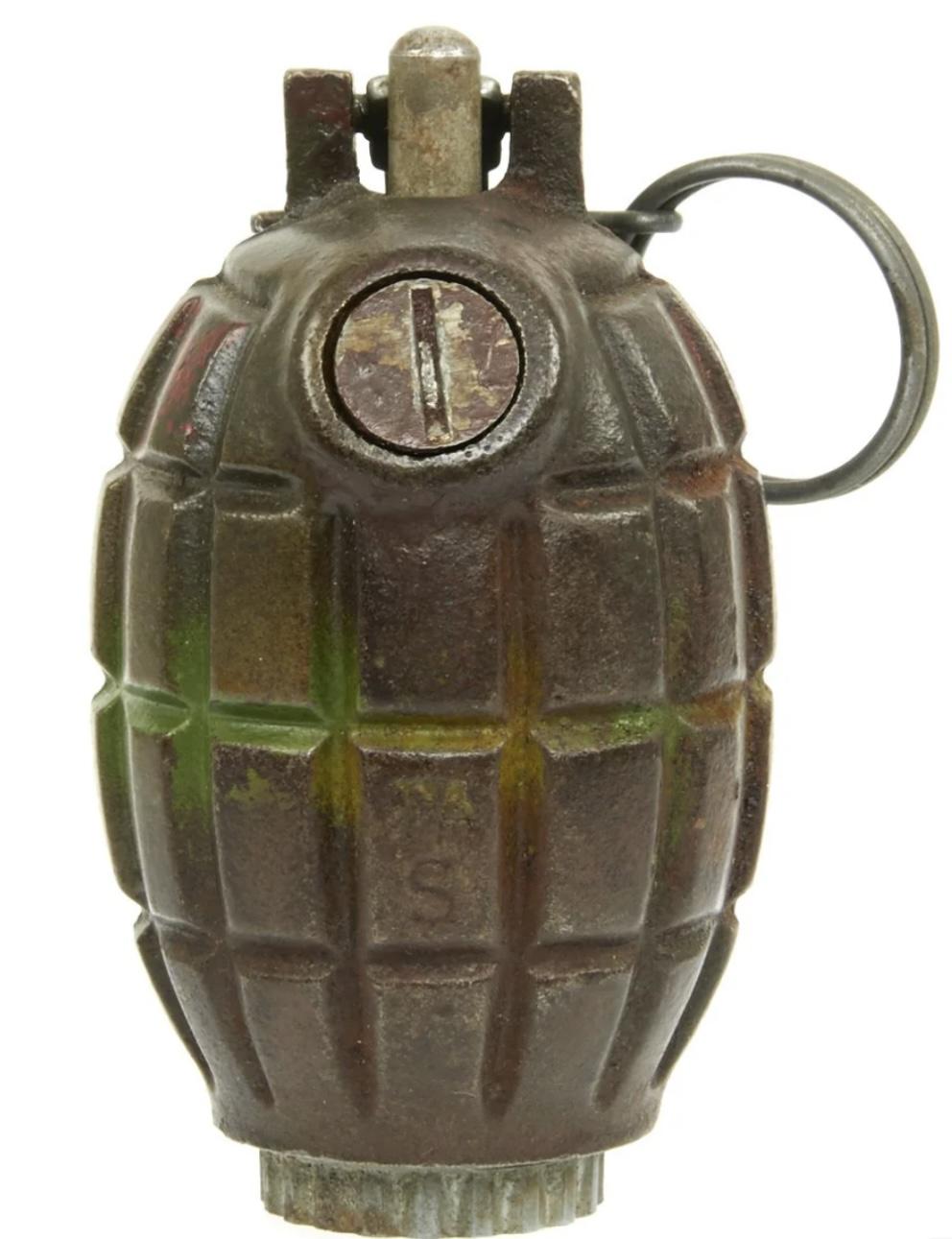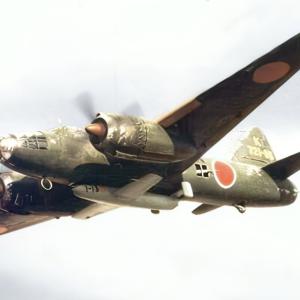
Mills Granade
The Mills grenade, officially known as the Mills bomb, became one of the most recognisable and enduring British infantry weapons of the twentieth century, its distinctive segmented casing a lasting emblem of the world wars. Designed in 1915 by William Mills, an engineer and inventor from Sunderland, it emerged from the need for a safer and more reliable explosive than the improvised devices used at the outbreak of the First World War. Mills had worked on engineering innovations for years, and when war came, he adapted earlier grenade concepts, incorporating Belgian and French ideas into a wholly British design. The result was the No. 5 grenade, quickly adopted by the British Army.
The grenade’s cast-iron body was designed with deep external segmentation, giving it a firm grip in mud and rain and ensuring a more predictable pattern of fragmentation when detonated. Inside, it was filled with explosives such as amatol or TNT, with a typical charge of around 71 grams. Its total weight was about 765 grams, heavy enough to give it stability in flight but still manageable for an infantryman to throw. The fuze assembly—usually the No. 5, later improved to No. 23 and No. 36 types—consisted of a striker held in place by a spring and safety lever. Pulling out the safety pin armed the grenade, and releasing the lever upon throwing allowed the striker to hit a percussion cap, igniting a four-second fuze. The delay was carefully chosen to allow the grenade to travel to its target but not long enough for the enemy to throw it back.
When it exploded, the grenade had a killing radius of roughly fifteen yards, though fragments could fly up to one hundred yards, posing a risk to friend and foe alike. It was primarily a defensive grenade, intended to be thrown from cover or from behind protection, as its fragmentation could be dangerous in open-ground fighting.
Manufacturing began on a vast scale in 1915, with production shared between major arms makers such as the Birmingham Small Arms Company and dozens of smaller engineering works across Britain. Even converted civilian factories took part, producing either complete grenades or components such as bodies, levers, and fuze parts. By the Armistice in 1918, over seventy-five million Mills bombs had been produced, an extraordinary industrial feat. This abundance ensured British and Commonwealth troops in France, the Middle East, and other theatres were well supplied.
The interwar years brought refinement rather than replacement. The No. 36 grenade, introduced in 1918, became the standard model, notable for its ability to be fired from a rifle cup discharger, giving it a range of over 150 yards. The No. 36M, a waterproofed variant lacquered to resist tropical humidity, served in overseas campaigns where corrosion was a constant threat. By the outbreak of the Second World War, the Mills bomb had become a familiar piece of equipment to soldiers, and it was produced in even greater numbers than in the previous conflict, with manufacturing continuing in Britain, Canada, and India.
In combat, the Mills bomb was both a tool and a psychological weapon. In the confined spaces of a trench, a dugout, or a ruined building, its detonation was devastating. The blast could clear enemy positions, deny passage, or force defenders into the open where rifle and machine-gun fire could reach them. Soldiers trained to throw it from a prone, kneeling, or standing position, and experienced troops could achieve distances of around 30 to 40 yards by hand. When coupled with its rifle-launching capability, the grenade could harass enemy positions far beyond normal throwing range.
Technical improvements over time included variations in fuze design to improve reliability, as well as slight changes in explosive filling depending on material availability. While TNT remained common, amatol, Baratol, and other explosive mixtures were sometimes used as substitutes during shortages. Despite such changes, the basic form and handling remained consistent for decades, a testament to the soundness of Mills’s original design.
By the time it was gradually phased out in the 1970s, the Mills bomb had been produced in well over one hundred million units across all marks and variants, making it one of the most widely manufactured hand grenades in history. It served in both world wars, colonial campaigns, and even in the hands of allied and irregular forces long after Britain had moved on to more modern designs. The simplicity of its mechanism, the effectiveness of its fragmentation, and the ease with which it could be mass-produced ensured its place as one of the most influential infantry weapons of the twentieth century.










